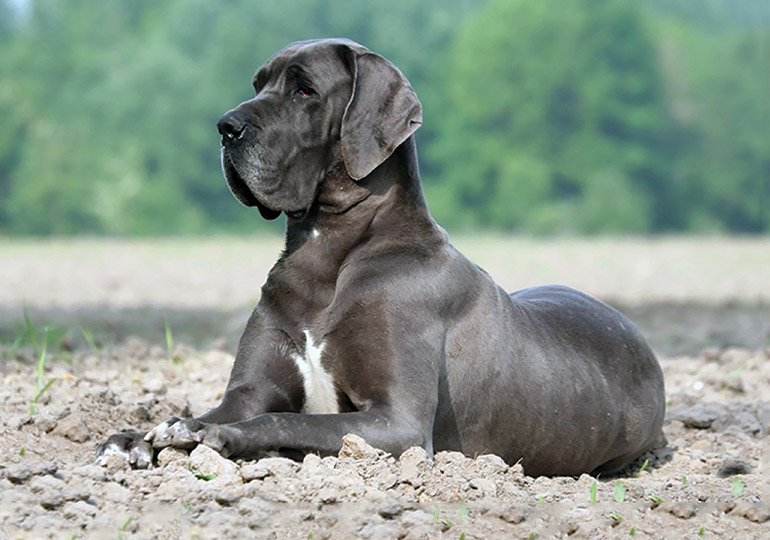Breeds
Great Dane

GROUP 7 - NON SPORTING
History
The Great Dane was developed to hunt the wild boar of Europe. Germany is credited with developing the “Apollo of all dogs” as it exists today.
The Great Dane is an ancient breed with drawings resembling the breed found on Egyptian monuments. During the 1800’s, breeders in Germany and England established the standards as they are recognised today. Great Danes were already participating in the first dog exhibition in Germany in 1863.
Appearance
The Great Dane has not only great size, it shows nobility and courage with speed and endurance. It is very muscular, strongly and elegantly built in outline, powerful yet displaying dignity. In appearance and nature, the Great Dane is one of the most elegant and distinguished varieties of the giant breed dogs.
An adult dog grows up to 76 cm minimum in height and weighs 54 kg minimum. The bitches would be smaller, with 71 cm minimum height and 46 kg weight. There are six recognised show colours. These being Fawn, Brindle, Harlequin, Black, Blue and Mantle.
Temperament
Great Danes are calm and not particularly active. They are kind, friendly and outgoing. Their exercise requirements are moderate. They enjoy half an hour to an hour walk daily then they are happy to relax at home. It is very important to obedience train them, otherwise it would be difficult to manage the 80 kg dog on the end of lead. They love their family and would guard them against intruders.
Health
As with all deep chested breeds, Great Danes can suffer from bloat, which is a critical condition with painful distending and twisting of the stomach. Hip and elbow dysplasia is a hereditary condition and dogs should be acquired only from controlled breeding. Heart and thyroid can also be a medical problem.
Suitability
Great Danes are family dogs who can live in the house, if daily exercise is provided. They are well behaved with children and other pets, but supervision is recommended. They can unwittingly cause injury due to their size and weight.
Most Great Dane owners consider the Great Dane to be a part of the family and would keep their dog inside the house. They would not thrive being a “backyard” dog. They have to be exercised regularly and trained and young dogs should not be left unsupervised for lengthy periods.
Words: The Great Dane Club of NSW Inc
Image: Hund
In Conclusion
Now you know a little about the Great Dane, you may think that this is the dog for you. Before you make a decision, please make contact with the breed club or your State controlling body for purebred dogs. They will be able to give you information about available puppies and also suggest dog shows where you can see the breed and speak to breeders. In this way you will gain a better perspective of the Great Dane and its needs, and whether this breed would suit your lifestyle.
Breeders
Sorry, there are currently no breeders advertising for this breed. If you are a registered Dogs SA breeder and wish to advertise here please create an advertisement here.

